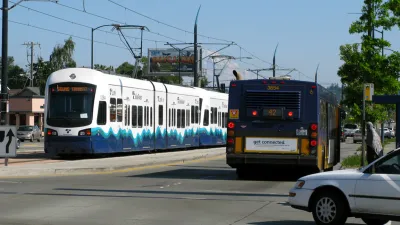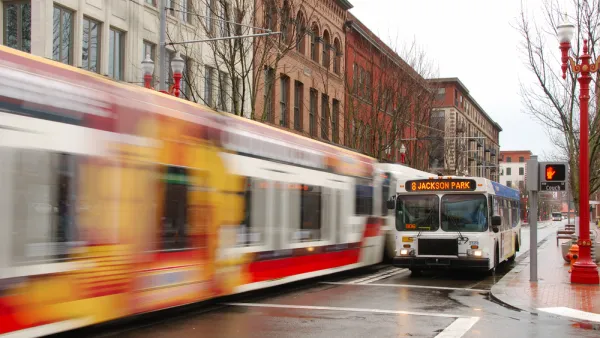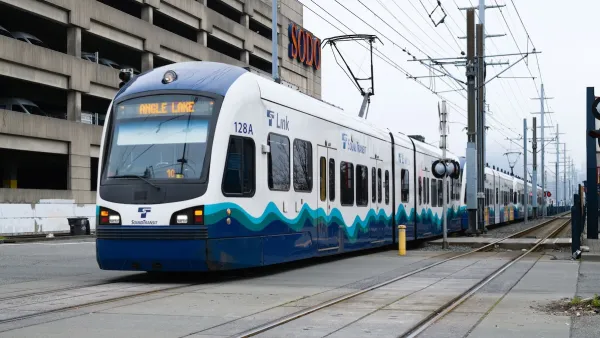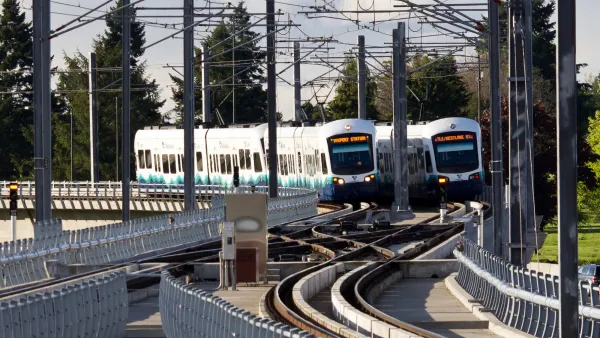Opponents of the ST3 transit funding measure in Seattle have argued that bus rapid transit is a cheaper alternative to light rail. A local write counter argues that point by making the economic case for light rail.

"A common criticism of the upcoming ST3 ballot measure is that light rail is too expensive and we’d be better off with bus rapid transit (BRT)," according to an article by Anton Babadjanov. In response to the argument for a less robust build-out of public transit infrastructure, Babadjanov examines the economics behind a range of proposed alternatives for addressing the congested state of roads around the region.
First, Babadjanov debunks the idea that wider highways would solve the Seattle region's traffic woes, based on concepts of induced demand and the massive size of the freeways that would be necessary to reach same level of lane-miles per capita as a city like Kansas City.
On the issue of buses, Babadjanov argues that for a bus to be an acceptable alternative to driving it needs to offer an alternative to traffic. Because long stretches of high-occupancy vehicle lanes are politically untenable, only new right-of-way remains as a path around congestion. But here's the rub: new right-of-way is actually the expensive part of constructing new light rail, and 80 percent of the cost for light rail in the ST3 proposal would go to right-of-way, according to Babadjanov.
So the argument goes: while Sound Transit is busy planning and building new right-of-way, it might as well make the most efficient use of it, with light rail instead of bus rapid transit.
FULL STORY: BRT Is Not Cheaper Than Light Rail

National Parks Layoffs Will Cause Communities to Lose Billions
Thousands of essential park workers were laid off this week, just before the busy spring break season.

Retro-silient?: America’s First “Eco-burb,” The Woodlands Turns 50
A master-planned community north of Houston offers lessons on green infrastructure and resilient design, but falls short of its founder’s lofty affordability and walkability goals.

Delivering for America Plan Will Downgrade Mail Service in at Least 49.5 Percent of Zip Codes
Republican and Democrat lawmakers criticize the plan for its disproportionate negative impact on rural communities.

Test News Post 1
This is a summary

Test News Headline 46
Test for the image on the front page.

Balancing Bombs and Butterflies: How the National Guard Protects a Rare Species
The National Guard at Fort Indiantown Gap uses GIS technology and land management strategies to balance military training with conservation efforts, ensuring the survival of the rare eastern regal fritillary butterfly.
Urban Design for Planners 1: Software Tools
This six-course series explores essential urban design concepts using open source software and equips planners with the tools they need to participate fully in the urban design process.
Planning for Universal Design
Learn the tools for implementing Universal Design in planning regulations.
EMC Planning Group, Inc.
Planetizen
Planetizen
Mpact (formerly Rail~Volution)
Great Falls Development Authority, Inc.
HUDs Office of Policy Development and Research
NYU Wagner Graduate School of Public Service





























